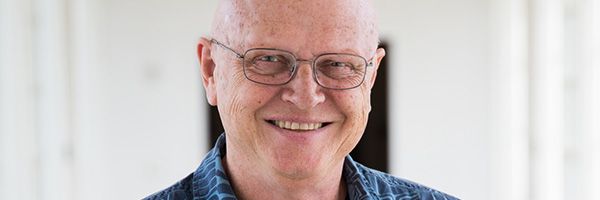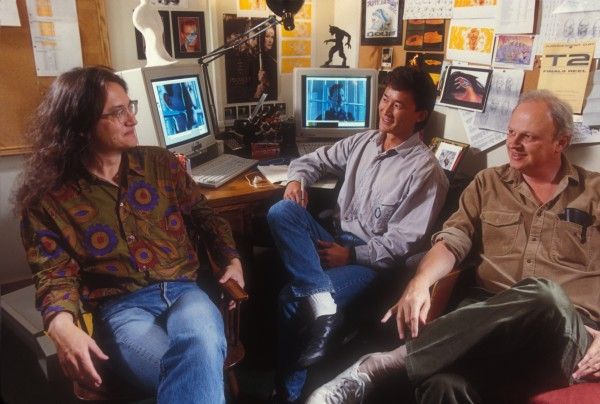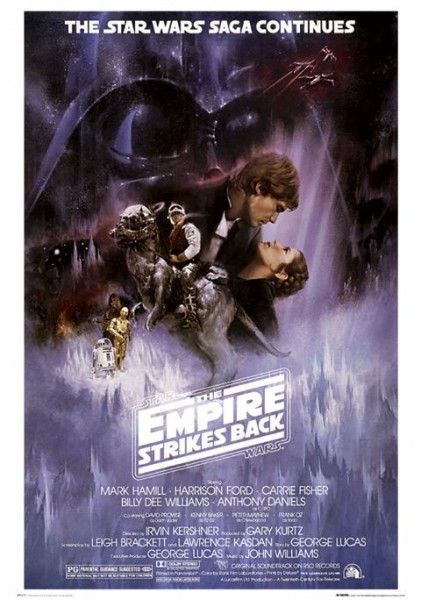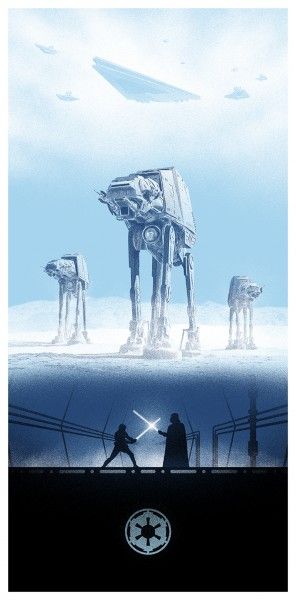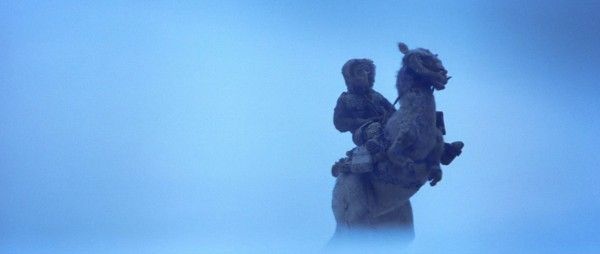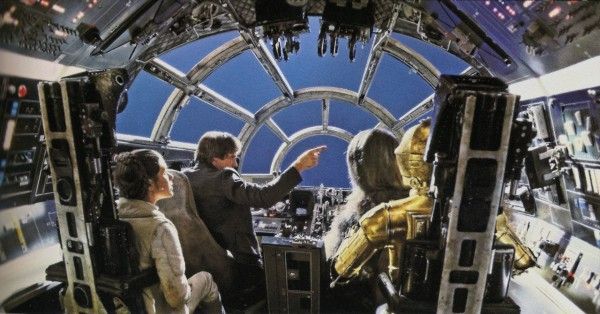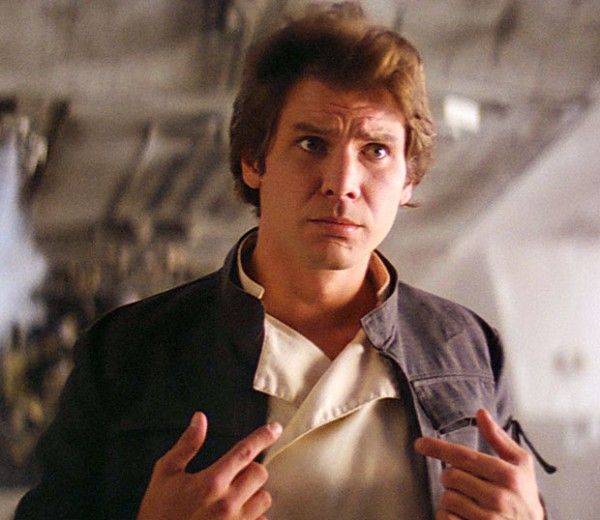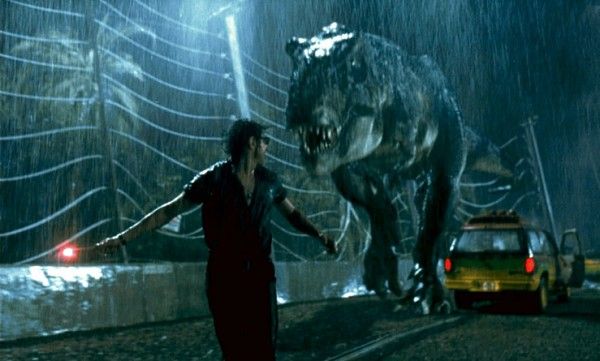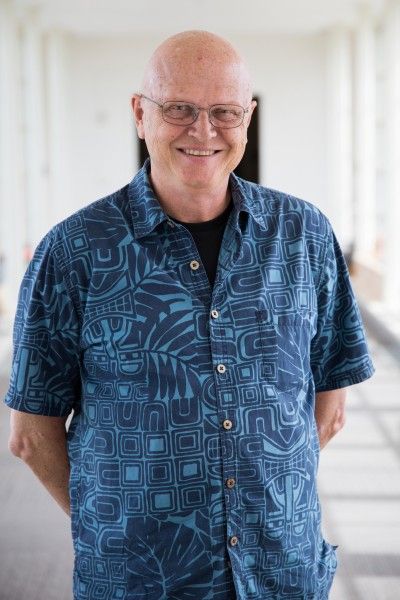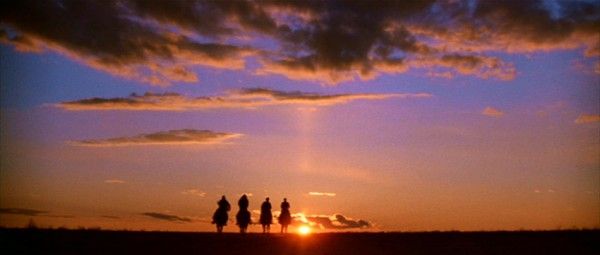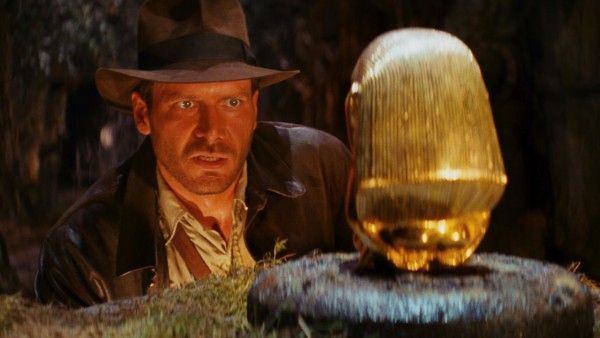As a longtime fan of Dennis Muren’s work in countless films that the entire planet loves, when I was offered the opportunity to speak with the eight-time Academy Award-winning visual effects guru, you could say I jumped at the chance. That’s because throughout my entire life, the work that Murren has done on films like Star Wars, The Empire Strikes Back, Return of the Jedi, E.T.,The Abyss, Jurassic Park, Indiana Jones and the Temple of Doom, Innerspace, and countless others helped form my love of movies, and getting to talk to him about the making of some of these films was something I’ll always be grateful for.
The main reason I got to speak with Murren was the 3D release of James Cameron’s Terminator 2: Judgement Day. Originally released in 1991, the film hit theaters like a thunderbolt, showcasing groundbreaking special effects that had never been seen. While VFX can now can do things Cameron could only dream about when making T2, at the time, the liquid metal, shapeshifting T-1000 was something the world had never seen, and mixed with the fantastic script and breathtaking action, T2 went on to win Academy Awards for Best Sound Editing, Best Sound Mixing, Best Makeup, and Best Visual Effects. In addition, the visual effects invented on the film were used as stepping stones to help get the industry to what everyone takes for granted today. For what he had to say about the making of Terminator 2, click here.
In addition to talking about the second Terminator film, I got to spend a lot of time asking about the making of the original Star Wars movies. As you can read below, he shares some great behind-the-scenes stories like how the original 70mm prints of The Empire Strikes Back went out without some finished visual effects shots, what it was like working with George Lucas, his thoughts on the special editions, how the Star Tours ride was made, why the person you see at the end of the ride with a mustache was a big deal, why he didn’t work on Episode III, and so much more.
How are you doing today, sir?
DENNIS MUREN: Just fine, how are you?
Doing excellent. Been a fan of your work my entire life, so it's really cool to get to talk to you today.
MUREN: Oh, thanks.
You've worked on so many iconic films, can you pick a favorite?
MUREN: You know they're from so many different era's and so many different directors and technologies, I don't know if I have a favorite. I mean I could say probably Empire Strikes Back would be one, from the old school. The new school is right around the era of Terminator 2 and Jurassic Park somewhere in that period, those two maybe were the most mind blowing and progressive, and you know, fantastic and imaginative films that I've been able to work on. We've had really lot of really big breaks in technology and artistry. But there's something about every one of them that's special.
Which of the films that you've worked were you most nervous the visual effects might not work? Or you might not make the actual deadline?
MUREN: Well you know we were worried about Empire because we had just moved up to Northern California and hired a lot of local people up here, and had to train them to be able to do the effects. I think there's about maybe fifteen or twenty 70mm prints that went out that have about thirty temporary shots on them that are not finals. So we actually didn't make it for the 70mm release, but then probably about a day later we got all those shots in, and all the rest of the prints were fine.
That's funny, so people that went and saw the 70mm prints actually on the first day didn't see the finished movie?
MUREN: That's correct, they saw shots, but they weren't up to the quality that we wanted, not that anybody could tell the difference. We were told that, "Oh don't worry about these, when we do the neck of the real ones the next day, and you get your shots in, we're going to pull all those prints back, and we'll replace them with all your perfect shots and everything." I don't know if they ever did that, so they may still be out there.
Do you remember what shot it was? Or what shots?
MUREN: No, you know it was a lot of them, I think some of it was in the Cloud City sequence maybe, and some of it might have been in a walker battle, the AT-ATs.
Sure.
MUREN: Those were some of the most complicated ones that we were doing at the very end of the show.
A lot of people might not know that you were involved in the Star Tours ride, I believe you directed it.
MUREN: Yeah, that's probably right.
Do you remember how the ride came together? Was it always going to be that version of the ride, or was it ever going to be something else?
MUREN: You know it just was like “hey George [Lucas] said we've got opportunity to do this simulator ride,” I think it was one of the first ones done, second or third one done, this simulator. I came up with the story for it and Tom Fitzgerald at Disney who was in charge of it there, came up with a plot for it, and George kind of took our two different ideas we had and sort of put them together. Then I went and broke it down into, you could say directed it from then on, figuring how we're going to do this three or four minute ride without any cutting. Which was really hard to do on film, nowadays it's a lot easier on CG but back then, so it was quite a challenge but also extremely fun to do it.
Just to think within that constraint, and be able to sort of time your own emotions, saying, "Boy just got out of that battle, now I need a breather. So I'm going to bank off to the right, I'm going to settle down and we'll have the guy talk for a little bit and then we'll pan on and we'll see, this ice planet coming by." Or icestroids, what we called them, that was the name for them. Just designing that thing all the way through for emotion and being able to do it with one continuous cut was pretty darn neat. I really enjoyed that.
I can't even imagine how many people have been on that ride over the decades that it was going.
MUREN: Yeah, and it's still on YouTube, you can see it on YouTube.
Of course, absolutely, I went on the ride way too many times.
MUREN: There's a guy in the end, of course just between us, that has a mustache, that's Ira Keeler and the law at Disneyland was nobody has facial hair.
Who was he?
MUREN: He was one of the model makers, everybody you see in there, in the taking off and the landing, when you see people, they are those of us who worked on it. I'm in it, the producers in it, the model people, and the few of us are in it. Well the last guy when you come in and you stop and you almost crash, and he sort of stands up, if I've got this right, I may be remembering it wrong. But he's got up and he goes and picks up a phone, he's got a mustache on. We didn't know that there was a thing that if you worked at Disneyland you can't have any facial hair. I was worried when I heard that, if we're going to have to reshoot that scene or something, and do that whole shot, but they let it in there. So, that's far as I know the first apparent Disney employee who's wearing facial hair.
That's great, I didn't know that story. You did some obviously amazing work on the Star Wars movies, do you have a favorite visual effect from the original trilogy and why?
MUREN: Well my favorite shot was the most educational one for me probably and it's in Empire Strikes Back and it's when, it's near the beginning and George came in and said, "I've got a problem here, see if you can do something." He had a helicopter shot flying over the ice field in Norway and the camera tilts down, way down below and you see the big ice field, and he said, "Is there a way you can put a Tauntaun in there running along?" The shots in the movie, and everything, and people that do remember that shot. I said, "No, with that technology there's no way we can do it." I tried to think about, you build a big model of course it would never look as real and he just said, "Well you know, think about it." I said, "Well there's no way." He said, "Okay, fine, think about it." He walked out, and he left me with the background plate to look at, and I tell you within 15 minutes I'd figured out how to do it.
I learned at that time not to stop thinking about something, if you can't figure it out. There's usually a way and if I'd stopped two seconds earlier that shot wouldn't be in the film, nearly as good as it is right now. I learned so much and I've just done that ever since. You know you can usually solve almost any problem, or you'll realize you can't, but usually you can solve almost any problem through some sort of trickery one way or another and get the shot to work, but you know when to give up.
I don't know if you'll actually have an answer to this but I'm going to ask. Do you know if there's been any talk about cleaning up the original Star Wars movies for an Ultra HD release?
MUREN: I don't know anything, I know about 2K but I don't know, or at least the stuff that was done five years ago or something. I don't know anything newer than that.
There's been over the course of the years a number of changes from the original films to the special editions. Are there any changes that you absolutely love, that you think make the films better? And are there any changes you kind of wish would revert back to the original versions?
MUREN: That's a tough question.
That's the reason I ask it.
MUREN: Right, when I first heard about this, when George first said he was going to change some of the stuff, and asked me if there was anything I wanted to change, I jumped on it. I came up with a list of probably about 25 shots of spaceships, mainly during the dog fight sequence at the end of the original film, that we never quite had right. There's big giant map lines showing, there's huge black, or gray things that are just in the shot, they shouldn't be in it. It just made it look real funky, and I was all for fixing that stuff up. That's what I where I thought it was going to end, I wasn't getting anything with plots or anything like that.
But my thought always was that the originals will always be there, this would be like the original there and then you'd have this, you could look at like this was what they meant to do at that time. That's not what happened, George just was really sort of making them like forever and apparently just wants one version out there forever. I agree that it's too bad there isn't the handwriting of how you were in 1983, and how you thought the movie should look or something. But an artist can do what he wants, and that's what George is doing. So there are, you know, you got the laser disk around, and maybe sometime the stuff will come back. I don't know. There are still very nice prints around of those original films, so it's not like they're gone.
I heard a crazy story and I don't know if it's true. This might be just the rumor mill going... but there's a story that George got rid of a lot of the original prints, 'cause he doesn't want them shown anymore, and he just wants the special editions.
MUREN: I've never heard of that, and I doubt that he would do that. But I don't know. There's a lot of them out there... but I've never heard that.
I think that as long as the originals exist, I completely agree with you, the artist should be allowed to do whatever the hell or whatever that person wants to do, but as long as the option exists for the original version.
MUREN: Yeah that was my take on it too
The extra stuff in Cloud City, where there's more windows and it feels like a bigger place, I don't have problems with that... I've gone off on a tangent. You were creative consultant on The Force Awakens, can I ask how involved you were in the film?
MUREN: Yeah, not very much at all. I was involved sort of looking at the dailies and making comments about some of the feeling, the style in the original movies, that hopefully that the spaceship should be flying with a little bit of fun. They don't just go from point A to point B, but you know they kind of make a nice little maneuver and bank over here, and then a course correct and then they settle, something like that. That was something that I always put into everything in the originals, the original three. Because it was just a fun factor of flying and especially your spaceship, you wouldn't go on a straight line, they're having a good time.
Sure.
MUREN: So they put that in, and it was just some stuff like that, it wasn't a big deal at all. But I did enjoy it, and working with J.J. [Abrams] the little bit that I did was pretty neat, and watching everything go by. I also didn't work on Episode III either, by the time that came up, I couldn't make it through that so I actually only worked on five of the shows. The original five.
I was looking at your resume and I was realizing you didn't do Episode III and I was wondering why you didn't?
MUREN: You know I think there was another show that had come in also, I think we were doing, I think Ang Lee had come in with Hulk, which I was wondering, "Why am I doing that show?" But he wanted me to do it, but also I had just, I was Star Wars out.
George was pushing the boundary with green screen and VFX on those prequels.
MUREN: Well there is, but it was ... we weren't there yet, that's where I came up with all this a lot of the stuff about just studying nature and a lot of the stuff if you were just to redo it, it would be a lot more realistic looking. I mean I'm just talking about the tactical stuff. A lot more realistic looking than we could do back then, because the rendering tools are better and our eyes are better and everything. Maybe you're right.
No, I completely agree, and the fact is that George was pushing the boundary of what could be done when he was making the prequels and it was the learning curve of what you guys did on those films that led the way to everything else.
MUREN: Yeah, well and his goal wasn't to push the boundaries, his goal was to tell a story that was bigger than you could ever do before. His imagination was always way out there, and then finally when he saw Jurassic he’d be, “hey it’s here, we can do it now.” So I guess around then started working on the prequels.
Sure, it's funny you bring up Jurassic 'cause I wanted to ask you...you worked on Jurassic Park, Jurassic World and I believe you've worked on the sequel Fallen Kingdom, doing the dinosaurs. Could you sort of talk about your level of involvement in the Jurassic World and Fallen Kingdom? How the technology from the original film was incorporated or is it all new stuff in terms of making the dinosaurs look real?
MUREN: Well I really worked only on the original two, I didn't do anything on three, I did a little bit on Jurassic World by looking in on it, and commenting and talking in little bits with the director about stuff here and there and dealing with the ILM people. Just to encourage them to try something and always come up with something different, not do the same thing that we had done before, so they'd look more realistic. But I didn't even get credit on that thing I don't think, but it was just consulting like that. I'm not doing really much at all on the new one, I mean very little, there's no ... I don't think there's any stamp of my work or anything on the new one at all. It was really just the first two were the ones that I was heavily involved with, because I was the Supervisor on those two shows.
So you've won one or two awards, or maybe seven or eight, or nine. Do you have a favorite of all the awards that you won?
MUREN: No, not really. Yeah I'm just going to say that I tell you when they go to the Oscars it's not the thing you, it seems like it's not the same thing you grew up watching on TV. That was like this amazing thing with all these celebrities and it's like some other world, but when you go there it's a bunch of people. A bunch of lights and you kind of recognize people and it's much too, it's very real. So in other ways it doesn't quite, it just seems like a different experience, I mean it was very weird thing getting the first and second ones, 'cause then I had a chance to really look at it, something different. Other people have said that same thing.
Do you keep them all together? Or are they in different places?
MUREN: No, they're all kind of all over, I kind of loan them out to people and things like that, so they're kind of around.
I can't even imagine... I've seen a few collections for people that have won, or studios and they've always been together, and I'm just always blown away because it's just the achievement of what has been done, it's just amazing.
MUREN: Yeah, I'm amazed too.
You've obviously worked with a lot of amazing directors, do they share any key habits? Or are they all sort of individuals?
MUREN: You know there's different styles and the cameras, Spielberg's, Lucas's, those ... I'm sure there's other ones, I never worked with ... Chris Nolan, and I assume those other guys are, are very visual. So they can say, "Put the camera over here, put the 35mm lens on, looking that way, and put the actors there and we're adding this over there." And you know, they'll be right, because they have that three-dimensional capacity in their head. I do too, and some of us grew up with this for whatever reason, I don't know what it was but it really helps if you have that same thing. Those are the people I can really easily relate to, back and forth, because we see those things all the time. We don't need Previs enough, as much as other people do to pre-visualize something, we can kind of do it in our heads.
That's one side, then there's other, some of the other guys though are just completely different and the tone of the story they're telling, and they may get in more with the actors and work with the actors and all. So there's a few different types, but there are similarities to the ones that make these visual movies that are just really strong and you come away with a feeling that the visual were made by people with confidence. They're in your face, and they're appropriate, they're not just crazy, they're appropriate, and those guys are usually the people that are very visual people, and have thought about this stuff since they were kids probably.
I've spoken to a number of people that have worked on a lot of movies and I've always asked if they hypothetically borrowed any props or things from set, because I know you wouldn't actually take anything. So I have to ask if you hypothetically borrowed things over the years, or was that something that didn't interest you?
MUREN: You know it didn't interest me. I've got props that people made that are friends of mine, from films they made. I've got some old stuff from way back, the 30's and 40's, but I don't have anything. It's probably 'cause I worked on it, and it just doesn't seem like it's in my memory bank anymore or something, you know?
Sure.
MUREN: I'm always amazed at what shows up for sale at the auctions though, that people actually did do that, that actually would take them. I guess it happens.
Oh, it's also back years ago it wasn't as big business as it is now.
MUREN: Yeah, right.
Is there anything that you collect?
MUREN: Nothing, I don't collect, I did as I said, I've got things that a friend of mine would do like an amazing sculpture from a Harry Osman film, and I have things like that. But I don't have any of the films I worked on, I haven't even collected things from friends in a long time, so I'm really not a collector.

